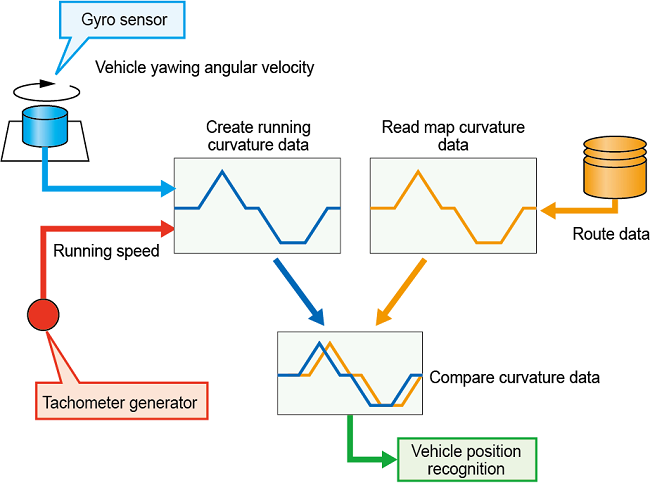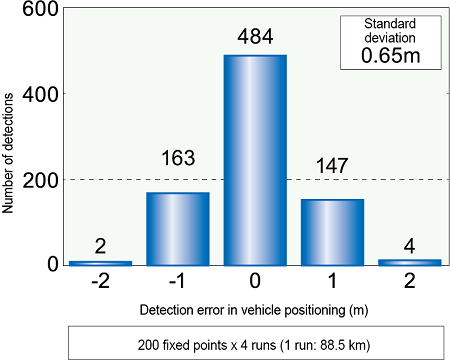20. High-accuracy train positioning system for tilting train
Tilting train controls the carbody tilted angle according to the position and speed to improve the speed in curves and the ride comfort. In the case of current meter-gauged railway lines, most of them identify the current position based on the location of Automatic Train Protection (ATP) beacons, so it is necessary to constantly update on-board position data for beacons. To improve this cumbersomeness, we have developed a train positioning system that does not depend on the ATP beacon and does not require the maintenance of on-board database for a long time.
In the developed method, the reference curvature data generated by designated signal processing of the curvature of the railway track measured during running in advance is stored in the on-board database as route data. Then these data are compared with the curvature of the railway track calculated from the vehicle's yawing angular velocity measured by the on-board gyro sensor and the running speed to detect the vehicle position (Fig. 1). In a running test, we have confirmed that this method can identify the vehicle position accurately with an error of ±2 m (Fig. 2). A spatial filter, which is a length-based filter, is applied to the calculation of the curvature of railway track to eliminate the effects of differences in vehicle sway between different types of vehicles and changes in track conditions due to aging. With this method, the update frequency of on-board route data can be extended to about 10 years.
In addition, with the conventional method, there is a chance to miss the vehicle position on the track if it travels on a different track from the database for passing other trains or in a large station. On the other hand, the developed method can continue to detect the vehicle position maintaining an accuracy of detection error of ±2 m, by detecting where the difference between the data of curvature while running and the reference curvature increases sharply to determine the location of the track in the station.
With these methods, tilting trains can be controlled according to the entry and exit in each curved section while reducing the update frequency of reference database of curves thereby improving the ride comfort of vehicle.


